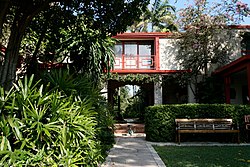
The Singapore Botanic Gardens is a 163-year-old tropical garden located at the fringe of the Orchard Road shopping district in Singapore. It is one of three gardens, and the only tropical garden, to be honoured as a UNESCO World Heritage Site. The Botanic Gardens has been ranked Asia's top park attraction since 2013, by TripAdvisor Travellers' Choice Awards. It was declared the inaugural Garden of the Year, International Garden Tourism Awards in 2012, and received Michelin's three-star rating in 2008.

The New York Botanical Garden (NYBG) is a botanical garden at Bronx Park in the Bronx, New York City. Established in 1891, it is located on a 250-acre (100 ha) site that contains a landscape with over one million living plants; the Enid A. Haupt Conservatory, a greenhouse containing several habitats; and the LuEsther T. Mertz Library, which contains one of the world's largest collections of botany-related texts. As of 2016, over a million people visit the New York Botanical Garden annually.

The Royal Botanic Garden Edinburgh (RBGE) is a scientific centre for the study of plants, their diversity and conservation, as well as a popular tourist attraction. Founded in 1670 as a physic garden to grow medicinal plants, today it occupies four sites across Scotland—Edinburgh, Dawyck, Logan and Benmore—each with its own specialist collection. The RBGE's living collection consists of more than 13,302 plant species, whilst the herbarium contains in excess of 3 million preserved specimens.

David Grandison Fairchild was an American botanist and plant explorer. Fairchild was responsible for the introduction of more than 200,000 exotic plants and varieties of established crops into the United States, including soybeans, pistachios, mangos, nectarines, dates, bamboos, and flowering cherries. Certain varieties of wheat, cotton, and rice became especially economically important.

Fairchild Tropical Botanic Garden is an 83-acre (34 ha) botanic garden with extensive collections of rare tropical plants including palms, cycads, flowering trees, and vines. It is located in the city of Coral Gables, Miami-Dade County, Florida, United States, just south of Miami, surrounded at the north and west by Matheson Hammock Park.

The Marie Selby Botanical Gardens is a 15-acre (6.1 ha) botanical garden located at 900 South Palm Avenue in Sarasota, Florida. The Gardens are located on the grounds of the former home of Marie and William Selby.

Mounts Botanical Garden is a botanical garden located in West Palm Beach, Florida. It is Palm Beach County's oldest and largest public garden with over 2,000 species of tropical and subtropical plants from six continents, including plants native to Florida, exotic trees, tropical fruit, herbs, citrus and palms. Mounts is a component of the Palm Beach County Cooperative Extension Service and is affiliated with the University of Florida / IFAS.

The National Tropical Botanical Garden (NTBG) is a Hawaii-based not-for-profit institution dedicated to tropical plant research, conservation, and education. It operates a network of botanical gardens and preserves in Hawaii and Florida.
Thomas Barbour Lathrop was an American philanthropist and world traveler. He was born in Alexandria, Virginia to Jedediah Hyde Lathrop, a descendant of the Lathrop family of New Hampshire, and Mariana Bryan, of Virginia. His older brother was Bryan Lathrop and younger sister was Florence Lathrop. At the outbreak of the American Civil War, Lathrop's father, an abolitionist, moved the family to Chicago. Lathrop spent two years at a New York City boarding school before being sent to Germany to attend the University of Bonn. Upon his return, he attended Harvard Law School, graduating in 1869. Lathrop was a member of the Barbour family on his mother's side.
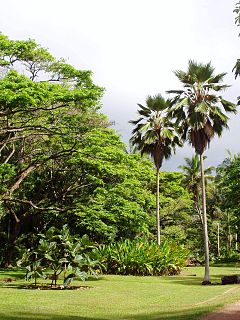
McBryde Garden is a botanical garden located on the south shore of Kauai, Hawaii. It is one of five gardens of the non-profit National Tropical Botanical Garden (NTBG).
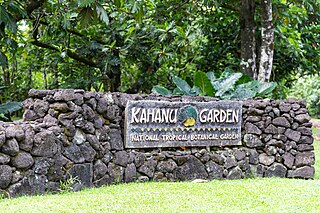
Kahanu Garden and Preserve is a botanical garden located on the Hana Highway near Hana, Maui, Hawaii. It is one of five gardens of the non-profit National Tropical Botanical Garden, the others being McBryde, Allerton, and Limahuli Garden and Preserve on Kauaʻi, and The Kampong in Florida.

Coastal Georgia Botanical Gardens is a former USDA plant-introduction station that has developed into a 51-acre botanical garden. It is located is Chatham County, Georgia, south of Savannah.

The Palm Cottage Gardens, also known as the Henry Nehrling Estate, is a historic site in Gotha, Florida. On November 7, 2000, it was added to the U.S. National Register of Historic Places.

The Montgomery Botanical Center, originally known as the Montgomery Foundation, is a nonprofit botanical garden and institution located at 11901 Old Cutler Road, Coral Gables, Florida. It collects seeds from wild plant populations worldwide, with an emphasis on palms and cycads. The garden is a scientific research facility, and not generally open to the public.
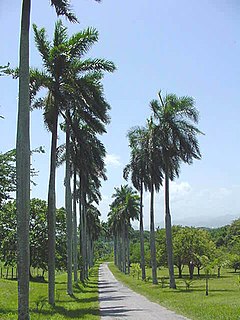
Cienfuegos Province Botanical Garden, officially, Jardín Botánico de Cienfuegos, also known as Jardín Botánico Soledad, is located 14 kilometers from Cienfuegos city centre.
Waldo Emmerson Sexton was an entrepreneur whose enterprises have attracted visitors to Vero Beach, Florida, since the 1930s and remain of value to the community, industry, tourists, artists, historians and horticulturalists. He was named to the list of Great Floridians by the Florida Department of State for his agricultural contributions.
The Fairchild Challenge is an environmental education outreach program of Fairchild Tropical Botanic Garden in Coral Gables, Florida, United States.

Kew Gardens is a botanic garden in southwest London that houses the "largest and most diverse botanical and mycological collections in the world". Founded in 1840, from the exotic garden at Kew Park, its living collections includes some of the 27,000 taxa curated by Royal Botanic Gardens, Kew, while the herbarium, one of the largest in the world, has over 8.5 million preserved plant and fungal specimens. The library contains more than 750,000 volumes, and the illustrations collection contains more than 175,000 prints and drawings of plants. It is one of London's top tourist attractions and is a World Heritage Site.
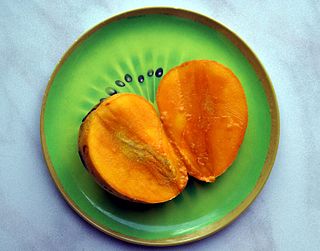
The 'Fairchild' mango is a commercially grown mango cultivar originating in Panama. The 'Fairchild Emerald' mango is a named mango cultivar that originated in southwest Florida.
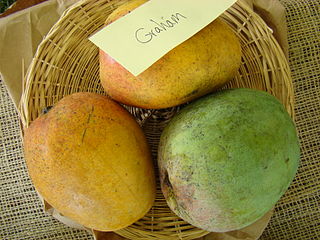
The 'Graham' mango is a named mango cultivar which originated in Trinidad.


